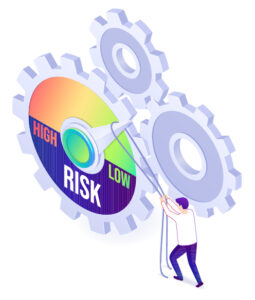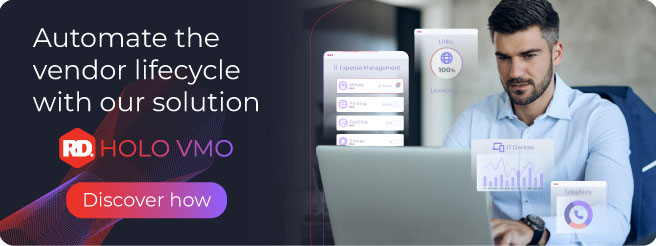Vendor risk management in the VMO: mitigating risks for stronger vendor relationships
Reading: 2 mins.
The Vendor Management Office (VMO) plays a crucial role in today’s business world. Its main objective is to ensure optimal interactions with vendors to the benefit of organizations. Within the VMO’s various responsibilities, Risk Management stands out as an essential activity. But what does it involve and how does it fit into the vendor management process?
What is Risk Management within the VMO?
Within the VMO, Risk Management is the systematic process of identifying, assessing, and controlling the risks associated with contracting and collaborating with vendors. This approach not only focuses on avoiding potential threats, but also on leveraging opportunities that may arise during a relationship with a vendor.
The importance of Risk Management
Its importance is undeniable, as its ability to anticipate and prepare organizations for challenges in a business environment is essential.
Firstly, proper risk management plays a critical role in preventing financial losses and avoiding potential economic disasters, which is essential for maintaining the stability of an organization.

Business reputation is an invaluable asset, and this is where Risk Management comes into play. A negative incident can severely damage the trust that customers and business partners have in a company.
Adaptability and agile decision-making are key to success. Risk management supports strategic decisions in uncertainty and promotes sustainable growth, regulatory compliance, and avoidance of legal and financial problems.
Essential activities of Risk Management:
Within Risk Management, various activities are carried out to ensure effective and safe collaboration:
Risk Identification: Recognizing potential threats and opportunities in the relationship with vendors. This encompasses financial, operational, strategic, and more.
Risk Assessment and Analysis: Determining the magnitude of the risk in terms of impact and probability. This helps to prioritize which risks require immediate attention.
Risk Mitigation and Control: Designing strategies to reduce or control the identified risks. This may include renegotiating contractual terms, establishing protection clauses, or seeking alternative vendors.
Continuous Monitoring: Regularly reviewing and supervising the identified risks and implementing measures to ensure their effectiveness and adapting to any change.
Impulse todas las capacidades de
su
Gestión de Proveedores
Risks Associated with each stage of the contract:
In any contractual relationship, it is crucial to understand that each stage of the contract carries a few risks that, if not identified and managed properly, can negatively impact the expected results. These risks vary depending on the stage of the contract in which we find ourselves, from the initial vendor selection to the contract termination and beyond.
By clearly understanding the risks associated with each stage, organizations can make informed decisions, establish appropriate controls, and maximize the value of their contractual relationships. Next, we will explore the specific risks linked to each phase of the contractual process.
Pre-contracting: Risks associated with vendor selection, such as lack of verifiable references, history of non-compliance, or financial problems.
Negotiation: Risks related to unfavorable terms, lack of protection clauses, or ambiguous terms that may lead to misunderstandings.
Execution: Operational risks such as late delivery, quality below agreed, or communication problems.
Termination: Risks related to contract termination, such as penalties, unresolved liabilities, or problems in transferring services to another vendor or back to the organization.
Post-contract: Long-term risks that may arise after contract termination, such as unfulfilled warranties or pending legal liabilities.
Risk Management within the VMO is crucial for establishing profitable and secure vendor relationships. Employing the risk management lifecycle effectively enables businesses to predict issues, mitigate risks, and capitalize on opportunities, ultimately fostering stronger and more advantageous vendor relationships. Through a proactive approach to vendor risk management, the VMO empowers organizations to attain their business goals and objectives.




